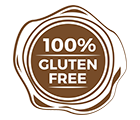1. Introduction
1.1. Exercises for Legs Health and Combating a Sedentary Lifestyle
In today’s world, more and more people follow a sedentary lifestyle, which negatively impacts leg health, especially as we age. A lack of exercises can lead to many serious leg conditions and issues, including:
- Chronic Venous Insufficiency (CVI): Prolonged sitting or standing can weaken vein walls and valves, leading to poor blood circulation in the legs. This can cause swelling, pain, and increase the risk of varicose veins.
- Hemorrhoids: A sedentary lifestyle can also contribute to the development of hemorrhoids, as poor blood circulation and increased pressure in the pelvic region can cause inflammation and discomfort.
- Venous Thrombosis: Prolonged sitting can lead to poor blood flow, increasing the risk of blood clots, especially in the lower limbs.
- Muscle Weakness: Lack of regular physical activity weakens leg muscles, making daily movement more challenging and increasing the risk of falls.
- Osteoporosis: Reduced activity can also lead to bone density loss, increasing the risk of fractures.
- Joint Degeneration: Without proper exercise, joints can become weak, contributing to wear and tear, particularly in the knees and hips.

1.2. Statistics
- According to the World Health Organization, physical inactivity is one of the leading causes of mortality globally, accounting for over 3.2 million deaths annually.
- In the United States, it is estimated that around 40% of people over the age of 65 have mobility problems, with one of the main factors being a lack of physical activity.
1.3. How Can Exercise Help?
- Increase leg muscle strength – which makes daily movement easier and prevents falls.
- Improve joint flexibility – which increases mobility and reduces stiffness.
- Enhance cardiovascular endurance – which improves overall heart and circulatory system health.
2. Exercises
2.1. Calves
Step Squat Step
Intermediate Level
Calves, Thighs, Glutes
Focus on controlled movement, avoid using force from the hips.
Abductor Lifts
This exercise improves stability and enhances balance, helping to increase control and coordination during movement. It also contributes to better overall mobility and reduces the risk of injury.
Beginner Level
Calves, Abductors (Outer Hip)
Keep your back straight and avoid leaning when lifting the leg.
2.2. Thighs
Air Squat
This classic bodyweight squat strengthens the lower body while improving overall functional movement. It helps build endurance, enhances stability, and supports better posture.
Beginner Level
Thighs, Glutes
Keep your back straight and ensure your knees don’t extend beyond your toes.
Jumping Alternating Lunges
Intermediate Level
Thighs, Glutes
Focus on controlled landings to avoid injuries.
Jumping Squats
Intermediate Level
Thighs, Glutes, Calves
Avoid jerky movements, land softly to protect the joints.
2.3. Glutes
Band Glute Kicks
Beginner Level
Glutes, Stabilizing Muscles
Keep your torso stable and avoid arching your back during the exercise.
Glute Bridge
Beginner Level
Glutes, Lower Back
Focus on squeezing the glutes at the top of the movement.
2.4. Full Body and Mobility
Mountain Climbers
This exercise engages the entire body, improving strength and endurance through controlled movements. It enhances core stability, boosts cardiovascular fitness, and supports better overall coordination.
Intermediate Level
Legs, Core, Arms
Maintain a straight posture and alternate leg movements quickly.
Knee to Elbow
This exercise improves overall mobility while enhancing core strength and flexibility. It boosts coordination and supports better movement efficiency in the hips and legs.
Intermediate Level
Legs, Core
Keep your back straight and control your movements.
Single Arm Plank Leg Through
Advanced Level
Legs, Glutes, Stabilizing Muscles
Keep your torso stable to maintain balance.
3. Conclusion
3.1. Why Should You Exercise?
- Improve muscle strength and flexibility.
- Reduce the risk of cardiovascular diseases.
- Maintain healthy joints and bones.
- Enhance overall well-being and fitness.





